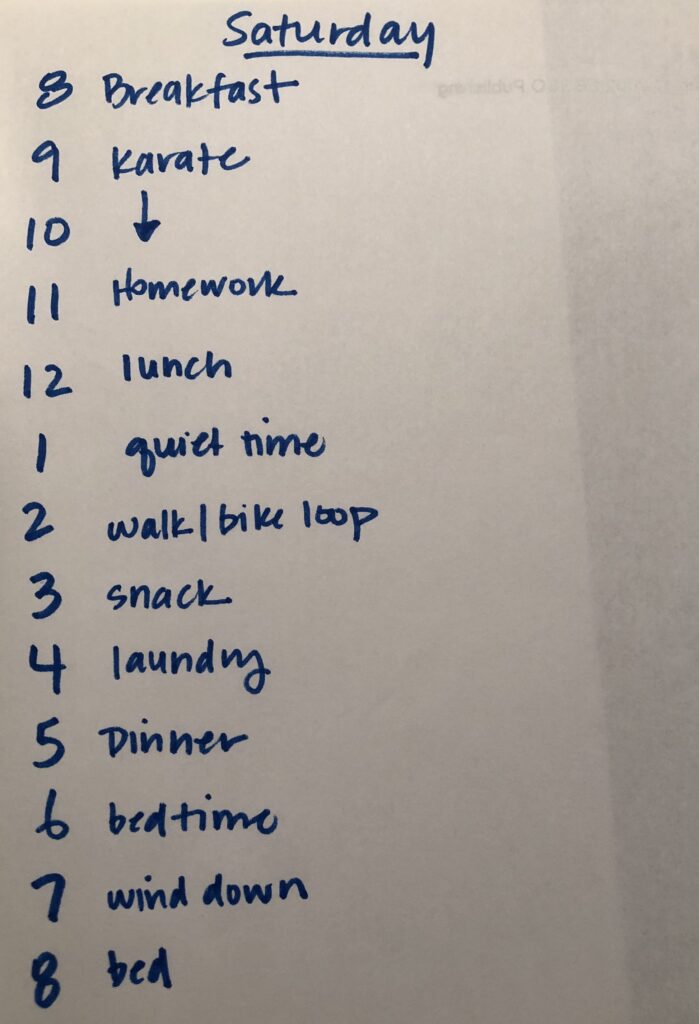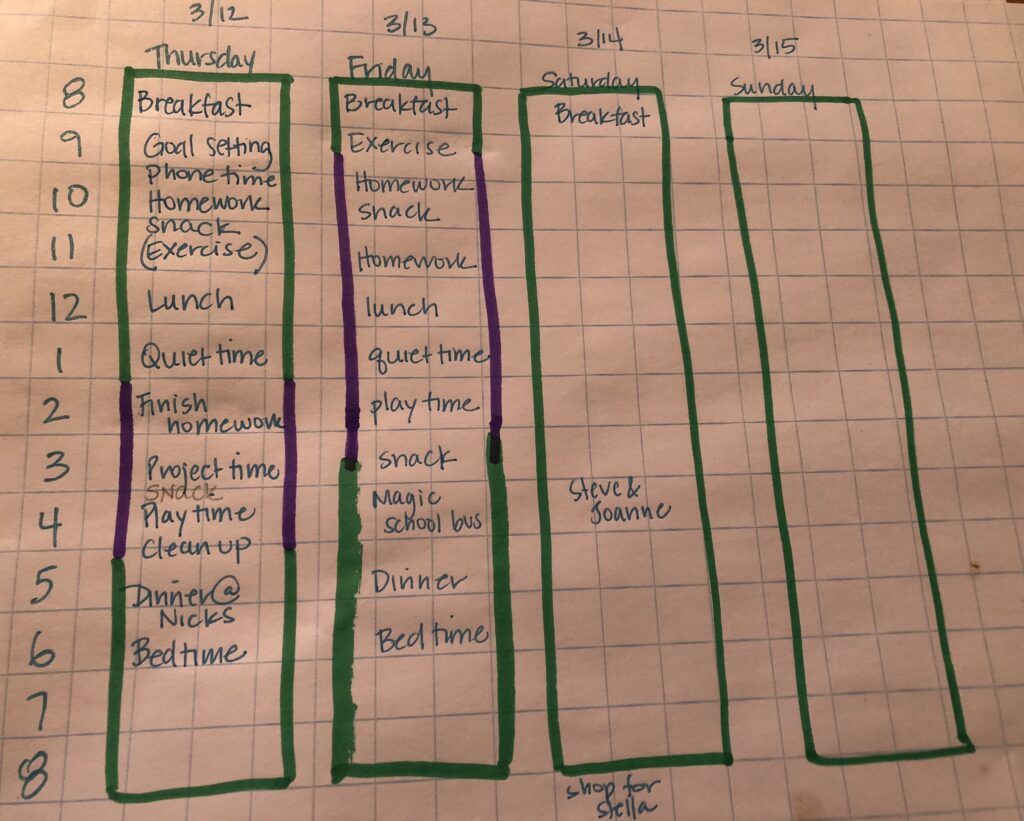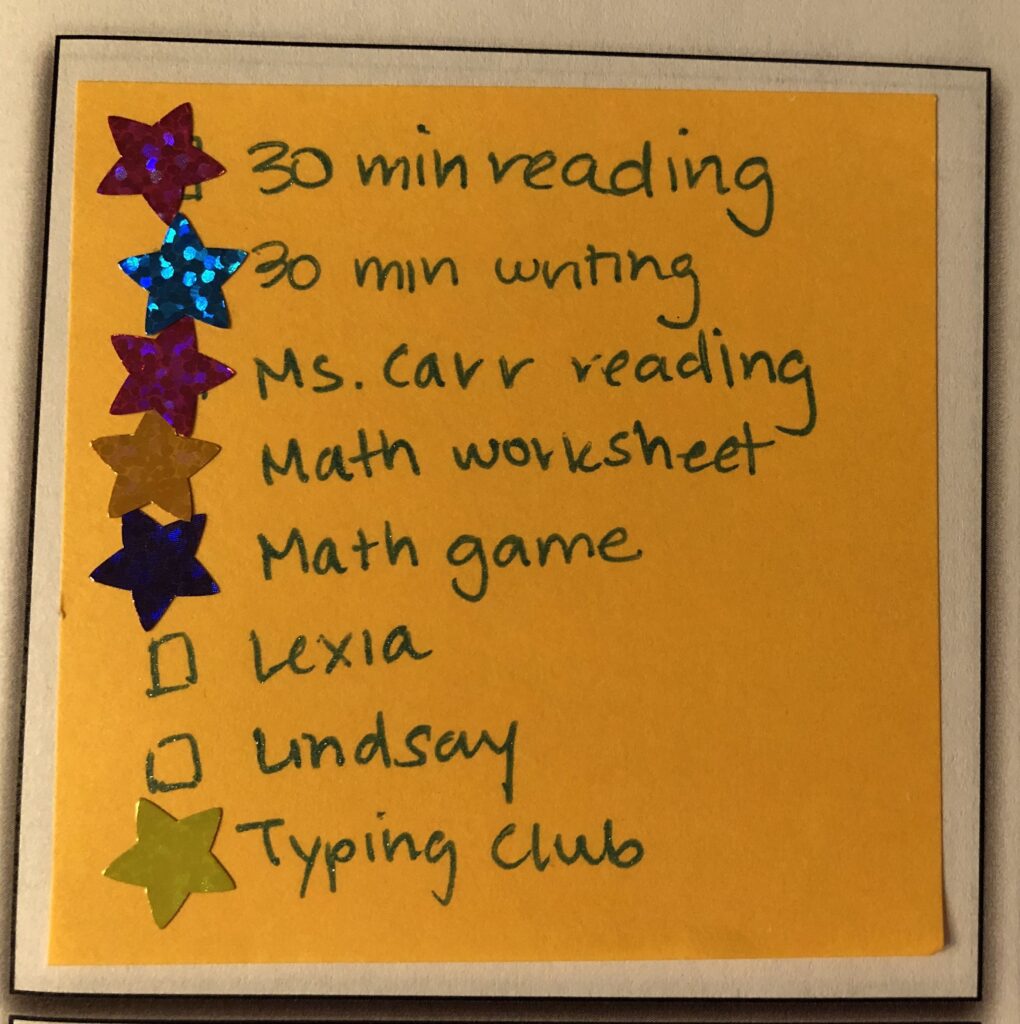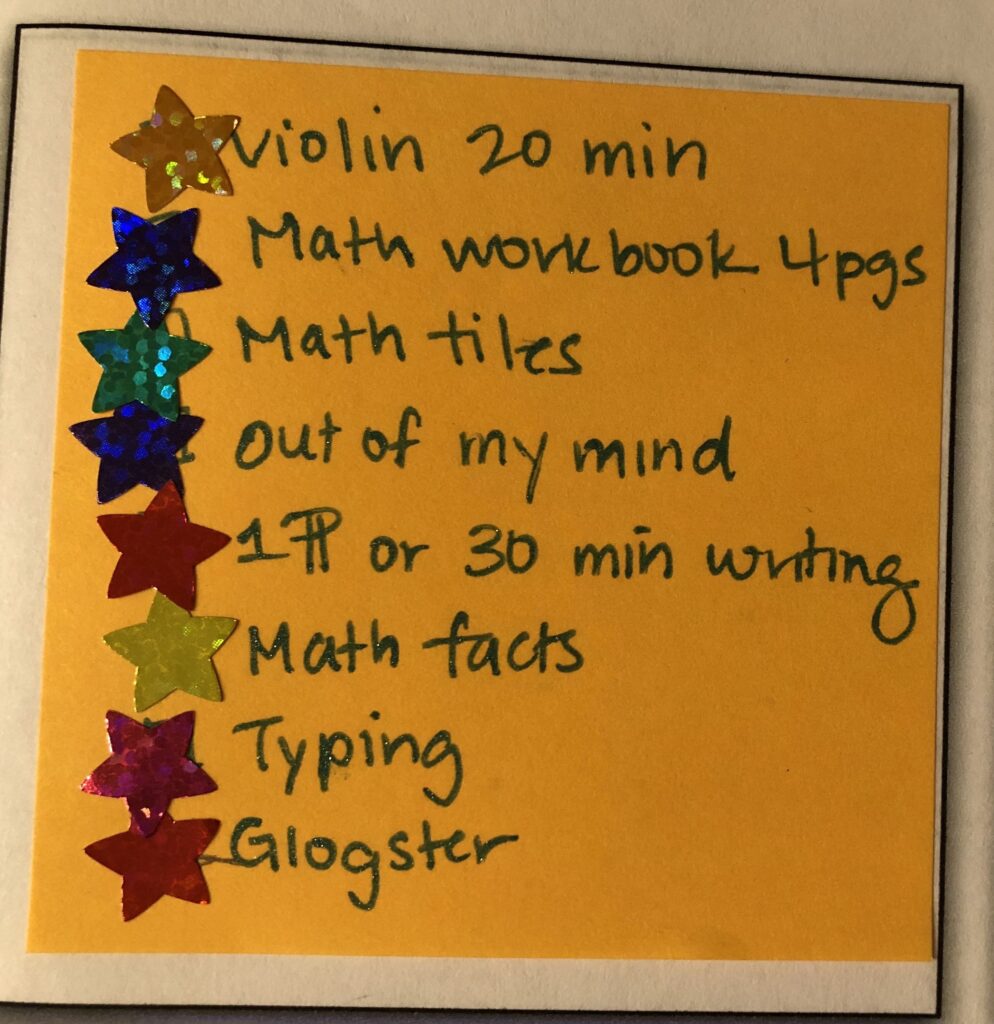Oh. My. God. School is closed for 6 weeks (update: for an undisclosed number of months)?!?! Welcome to day 1 of our new reality. If you are like most people you are thinking about how to juggle your full-time job and your full-time parenting duties. The goal of this blog isn’t to tell people what they should be doing, or make any judgments about how you are figuring out how to survive this next month and a half (or longer?) – it is about providing some resources for those of you who feel like you are starting from square one and aren’t totally sure how to design educational supports and structures for your kids at home. The focus of this blog is about educational supports, because that is what I know about. I want to acknowledge that many families will be focused on figuring out how to ensure the basic needs of their family are met (food, shelter, etc.) – and until basic needs are met, it’s impossible to think about anything else. The goal is not to set unrealistic expectations, but to share educational resources and tools to help you navigate this time. Although this blog can be used by any parent who is trying to figure out how to support their kids educationally in relative physical isolation, I’m writing this blog specifically for foster/adoptive parents because I deeply care about supporting that community… and because that is what I know.
I have NEVER written a blog before – and frankly – as an academic who pores over and agonizes about writing, this is a much different context for me. The goal is to share what information I have, and to think with you about the needs that are coming up in your particular context. By way of an introduction, I’ll tell you a little about my own family and background.
My Background
My wife and I adopted our two daughters about a year ago (now 8 and 10 yrs old). When they moved in with us they were at the start of their 1st and 3rd grade years. Because I’m a professor of education, my wife let me take the lead on thinking about how to support our girls academically. Over the past 2 years I have spent a lot of time thinking about how to design effective educational supports. Both girls had missed a lot of school – and weren’t able to read or write well enough to meaningfully participate in class. Our summers have been a time when I have worked with them on academics. When the news came that school was going to be closed for 2 weeks – I thought, “ok, we will pretend this is summer.” Today, when we learned that school was going to be closed for 6 weeks (update: months) – I realized this was going to be just as intensive as summer, and other folks might be similarly reeling and searching for a plan. This blog is an attempt to share with others who might need educational resources to navigate these next few weeks (months, etc).
What to do Day 1? Set up a schedule
The first thing to do when staring down the empty school-less future is to start putting together a daily/weekly schedule. Many kids who have experienced trauma are particularly sensitive to disruptions in routines, and a schedule will help them know what to expect. In our house we use an hour-by-hour schedule for any non-school day (see image below). Not everything actually takes an hour, but this level of precision works for us. This has helped our kids know what is coming and that there will be fun sprinkled in with all the work. This also helps us recognize when we’ve put too much work and not enough fun in a day. Before our kids could read, we drew pictures for each of the activities. For times when we have multiple days of unstructured time, we tend to show the schedule across multiple days, so they can know what the week looks like. Although this might seem like a lot of work, unstructured time has led to the kids frantically asking “what can I do?” “what are we doing now?” “when can I…?” getting anxious, picking fights with one another, or with us.

There’s a few things I think about when starting to plan a schedule – specifically when thinking about the span of multiple weeks and relative physical isolation. Because I’m a linear thinker, I break things down into steps:
- Step 1: Figure out the constraints on your time. If you are in a two parent household which hours are you in charge of the kids? If you have child care help which hours are they in charge? If you are the sole parent/caregiver, what hours of the day are you available to parent and support your kids and what hours of the day do you need them to be more independent?
- Step 2: Put an hour of quiet time on the schedule every day. As our kids once told our social workers, the only rule of quiet time, is that you can’t talk to an adult. (“unless you’re hurt” “yeah, but you have to actually be hurt.”) In truth, there are additional rules of quiet time. You need to be in your own space (e.g., room, den), there is no technology of any sort during quiet time. If it has an on/off switch in our house, it’s not allowed. We have found our kids NEED this down time…. And we have found this down time is essential to our sanity. Sometimes they read, sometimes they draw, sometimes they play with their toys, it doesn’t matter what they do, as long as it gives us all a break. When our daughters’ 2-year-old half-sister was living with us, she did quiet time too. If you have younger kids that nap, I’d arrange quiet time to be during that time. For us, we typically schedule quiet time right after lunch.
- Step 3: Figure out what high level goals you have for your child/children. This might be as simple as “keeping them occupied while I work” or as ambitious as working towards specific academic goals. My primary goal, is that I want the girls to love learning. I also want them to make progress towards grade level expectations – so they need to work hard on all academic topics (reading, writing, math).
- Step 4: Ask the kids what academic goals they have for themselves. Last summer my oldest wanted to get better at spelling. Today she wanted to work on and finish a Glogster site all about facts about the natural world. My youngest wanted to work on typing club and really get her “g” and “h”s down. I try not to judge their goals, but just help them work towards them.
- Step 5: Figure out what non-school learning you might want to do. Often times in schools – particularly for kids who are behind academically – they only get a chance to focus on reading, writing, and math. In this six weeks, you might find it is also a nice time to think through how to help them explore other valuable kinds of learning. I generated a list of project ideas to help my kids think about what they might want to spend some time learning over the next six weeks. Here are some project ideas I came up with for them to choose from:
- Develop a Glogster website
- Science Project
- Art Project
- Write and “publish” your own book
- Write and produce your own play
- Learn some new dances
- Take up a new skill / talent / craft (juggling, knitting)
- Create a comic strip
- Learn how to cook / bake
- Design and create a city from recyclable objects
- Make a scrap book
- Step 6: Figure out what work the kids should do each day. Based on both your goals and their goals, you should figure out how much work they should do each day. You might find that for some activities a time goal works better (e.g., write for 30 minutes) and for some activities a performance goal work better (e.g., write a paragraph of your essay). We use a post-it for each kid and write down their list of homework. When they complete an activity, they can cross it off (we use stars, because that is slightly more fun) In the examples below, you’ll see our academic goals (based on some of the recommendations from teachers) and their own personal goals (Glogster and typing). I like using a post-it because it allows me to customize each day a bit differently and it doesn’t let me try to fit too much on the schedule. In subsequent blogs I’ll talk more about the individual kinds of activities we do with our kids, as well as talking about how to make sure the amount is right sized for your child.
- Step 7: Translate your constraints and goals into your daily schedule. I often start with identifying meal times and then structuring activities around those. We use color coding to show who is in charge. One feature of this system is that although we have identified the times in which the kids will be working on their homework tasks, we don’t specify what they will be doing when. (This is different from a schedule that says 8:00-8:30 reading, 8:30-9:00 math. You can figure out what works best for your family). Our kids seem to like having control over the order that they tackle their homework. Our oldest likes doing what she considers to be the hardest thing first, the youngest often leaves her least desirable thing for last. You can do your daily schedule on a piece of scratch paper (like the weekend schedule above) on your home calendar, or laid out in a week view (like the partially filled out example below – we are still working to figure out what our days will look like).

- Step 8: Let your schedule flex if it needs to. In our house we find that some things take us longer than the hour, and some things are shorter. If we finish up tasks quickly (e.g., homework or laundry) and have some extra time, the kids know they can go play or otherwise amuse themselves.
Concluding Thoughts
I’ve tried to lay out some of the first things we put in place to when we are trying to surviving school-less-homebound days, if any of this is helpful – that’s great! I’m not offering this as the “right” way to make a schedule – it’s just what has worked for us. One of the biggest lessons we have learned is that we try something out and then tweak it so it works for our family. I’d love to hear about things that have worked for yours as you transition to this new reality.
In subsequent posts I’ll talk about different resources for homework (particularly independent work), how to manage multiple kids who need support, and how to right size your expectations. If you have academic issues you are struggling to address, I’d love to hear about them either here or by email ([email protected]). I love a good educational puzzle, and I think we can learn from each other as we make our way through this.

